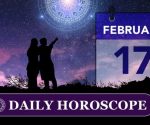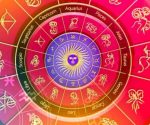Full Moon: The unusual link between fertility, the menstrual cycle and the lunar sequence
[ad_1]
For centuries, the Moon has been thought to have a direct impact on both nature and the human race, with everything from tide patterns to the menstrual cycle being affected. Female fertility is directly impacted by the menstrual cycle – but what is it about a Full Moon that affects this natural process? Both ancient anecdotes and modern science have come together to prove this unusual link – and this is how.
The average length of a woman’s menstrual cycle is almost identical to the waxing and waning sequence of the Moon.
With both cycles taking an average of 29 days, it is easy to see where the initial link was made.
One of the most significant connections between female fertility and the lunar cycle is based on the tides.
For centuries, a connection has been made between the Moon’s control on the tides of the sea, along with the internal tides of the menstrual cycle.
While it may seem like a far-fetched theory, there are a number of scientific studies which have proven the basis of this link.
READ MORE: Princess Beatrice’s engagement ring is different from Kate & Meghan’s
Can a Full Moon affect fertility?
According to the medically accredited website Healthline, research into the effects of the Moon on female fertility took place as early as the 1800s, with Charles Darwin being one of the earliest researchers.
A later study published in 1986 found that in a focus group of 826 women, 28.3 percent of them began their periods around the new moon.
With the first Full Moon of 2022 taking place as we speak, the New Moon will appear on February 1, 2022, at around 6:48pm.
How does the Moon affect the menstrual cycle?
While there is no clear answer, a number of scientific studies have produced a range of theories that link the eerily similar lunar cycle to the menstrual cycle.
Dr Chenette of the Pacific Fertility Centre in San Francisco claims the explanation may lie in the light of the Moon, and its effect on the production of melatonin – the ‘sleep hormone’.
Melatonin is produced as a result of the brain’s response to darkness, so it can easily be blocked when the body is exposed to light at night time.
The bright glow of a Full Moon could be to blame for the altered timings of a woman’s menstrual cycle because a lack of melatonin often means the cycle can’t be regulated.
What was the origin of the concept?
Though science has identified a loose link between the Moon and female fertility, ancient anecdotes are responsible for the theory that darkness could be the root of this connection.
Professor Charles Kingland of Liverpool Women’s Hospital claims a woman would be at her most fertile two weeks before her period starts.
If a woman begins her period around the New Moon, she would be most likely to conceive a fortnight beforehand when the sky is the darkest.
During the palaeolithic (caveman) era, couples would have engaged in sexual intercourse in the dark of the night when the lack of light could hide them from hungry predators.
Despite a number of intriguing studies, a more recent investigation by period tracking app, Clue, has debunked the astrological connection between fertility and the lunar cycle.
The 2019 study gathered data from 1.5 million users, though it found there was “no discernable link between the Moon and menstruation”.
While around 30 percent of women will begin menstruating on or around a New Moon, it doesn’t provide concrete evidence of a meaningful connection.
Healthline reported: “Clue’s study explains that statistically, every woman will sync up with the lunar cycle at certain points in their lives, but this could simply be a random coincidence.”
[ad_2]
Source link










